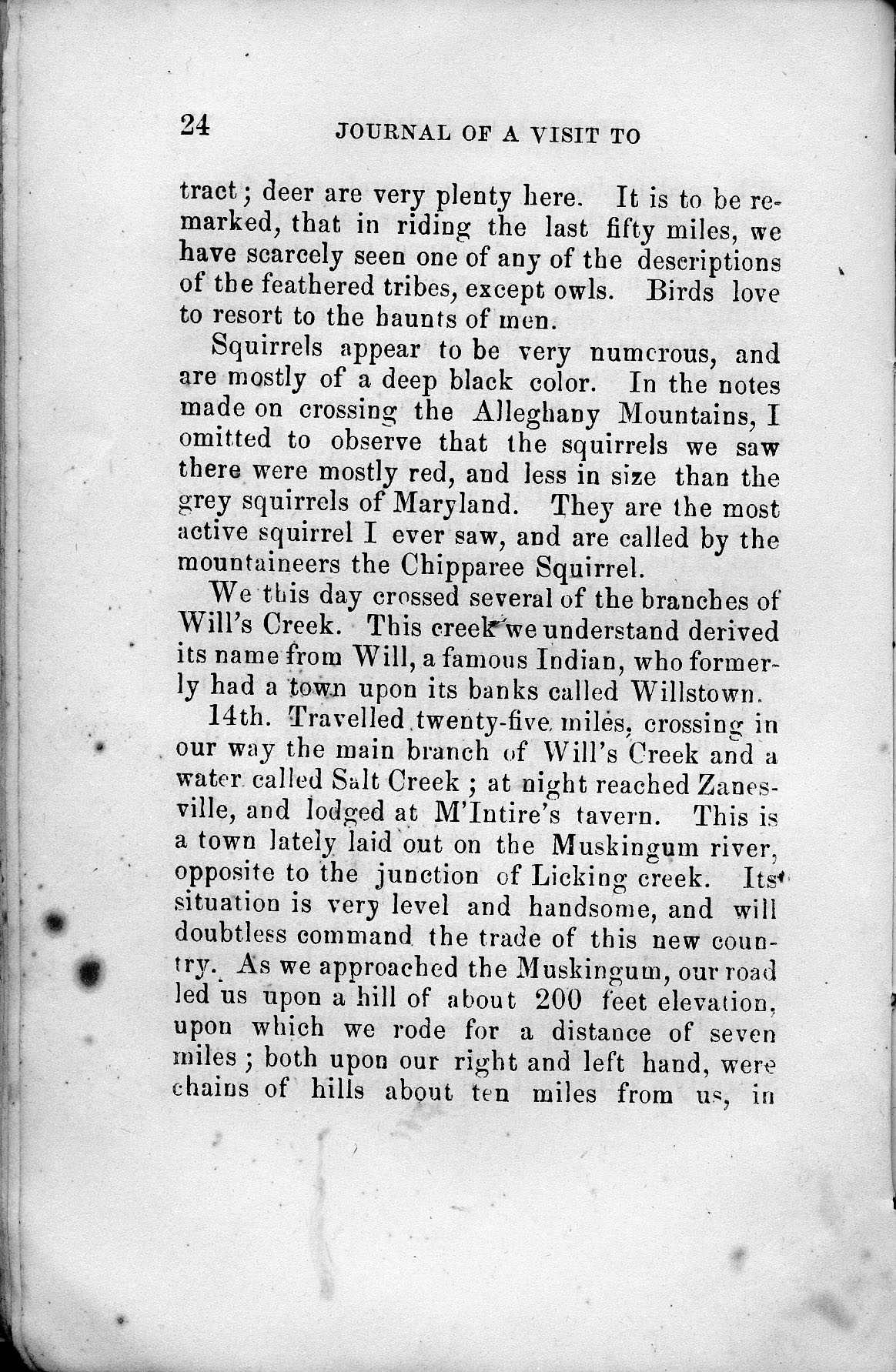tract; deer are very plenty here. It is to be
re-
marked, that in riding the last fifty miles, we
have scarcely seen
one of any of the descriptions
of the feathered tribes, except owls. Birds
love
to resort to the haunts of men.
Squirrels appear to be very numerous, and
are mostly of a deep black color.
In the notes
made on crossing the Alleghany
Mountains, I
omitted to observe that the squirrels we
saw
there were mostly red, and less in size than the
grey squirrels of
Maryland
active squirrel I ever saw, and are called by the
mountaineers the Chipparee Squirrel.
We this day crossed several of the branches of
Will's
Creek. This creek we understand derived
its name from Will, a
famous Indian, who former-
ly had a town upon its banks called Willstown
Travelled twenty-five miles, crossing in
our way the main branch of
Will's Creek and a
water called
Salt Creek; at night reached Zanes-
ville
a town lately laid out on the Muskingum river,
opposite to the junction of Licking creek. Its
situation is very level and handsome, and will
doubtless command the trade of this new coun-
try. As we approached the Muskingum, our road
led us upon a hill of about 200 feet elevation,
upon which we rode for a distance of seven
miles; both upon our right and left hand, were
chains of hills about ten miles from us, in

